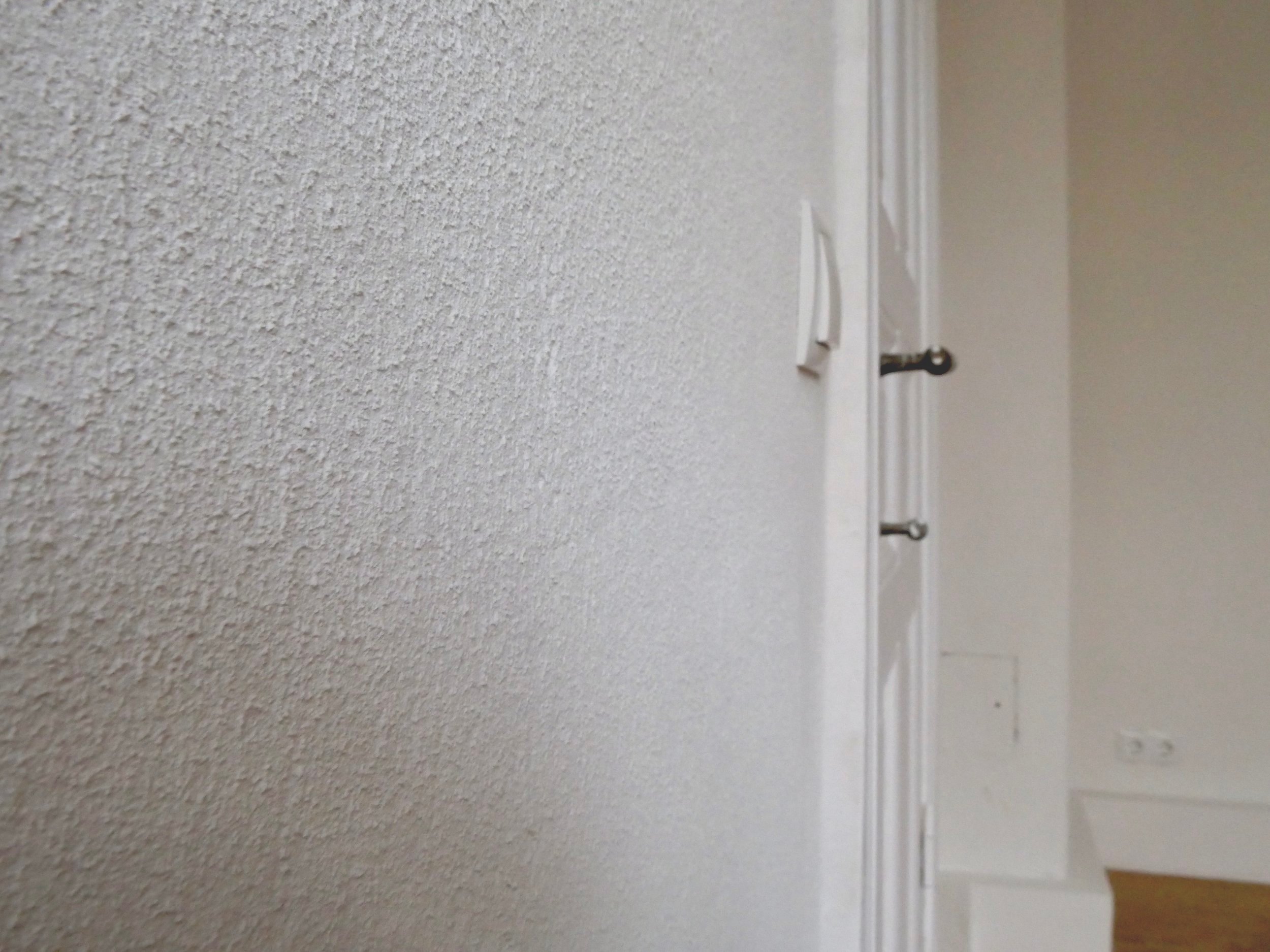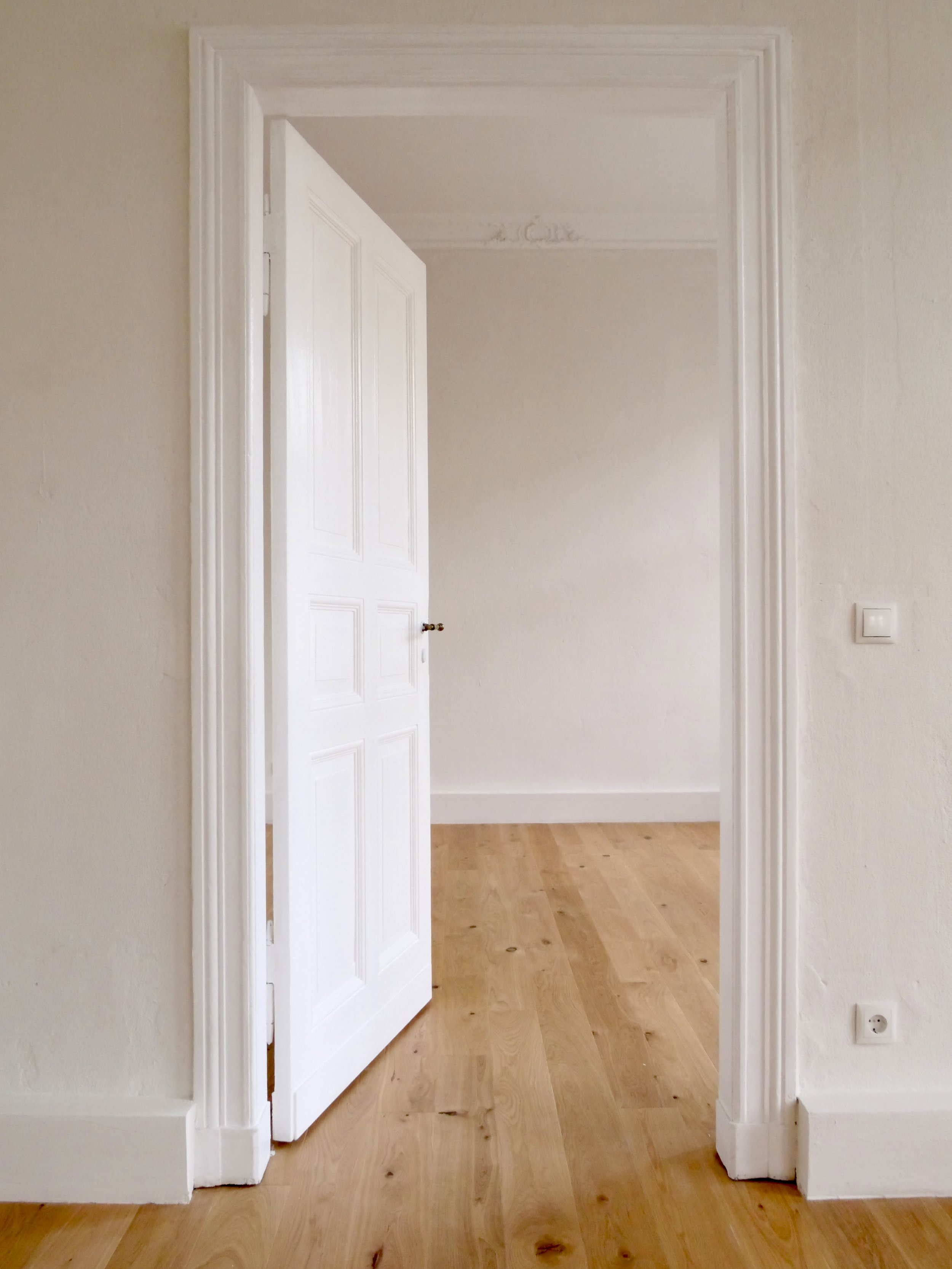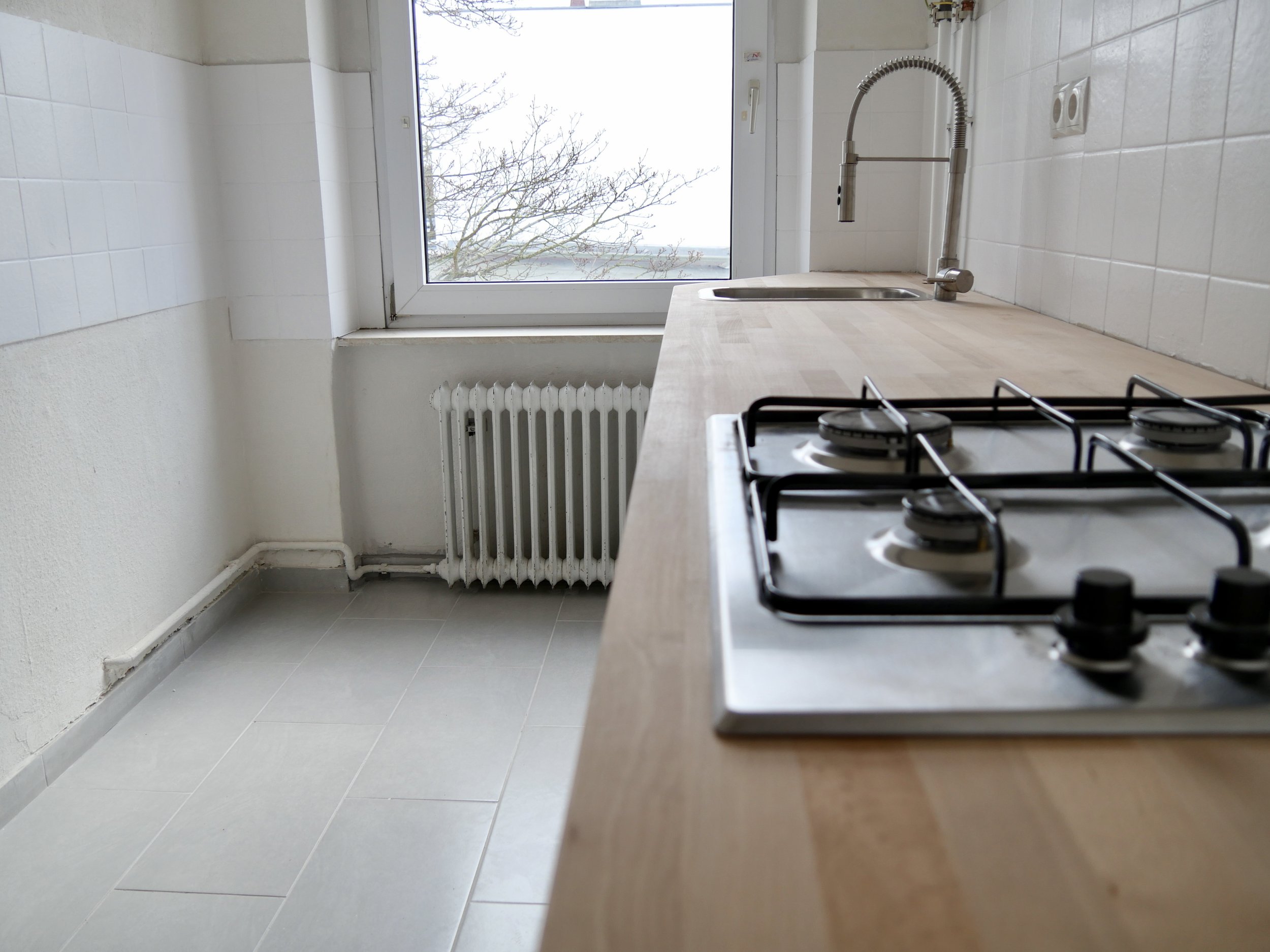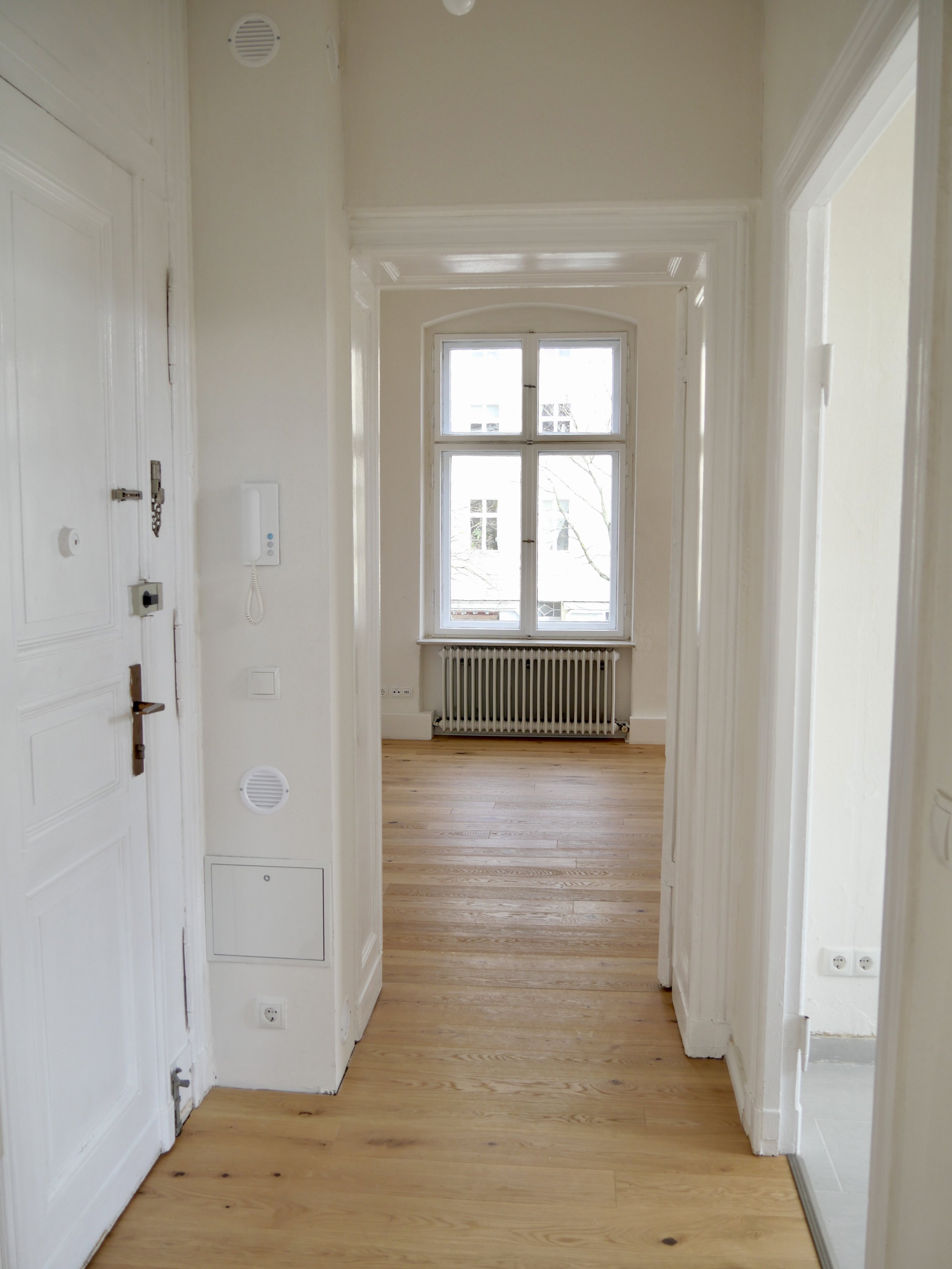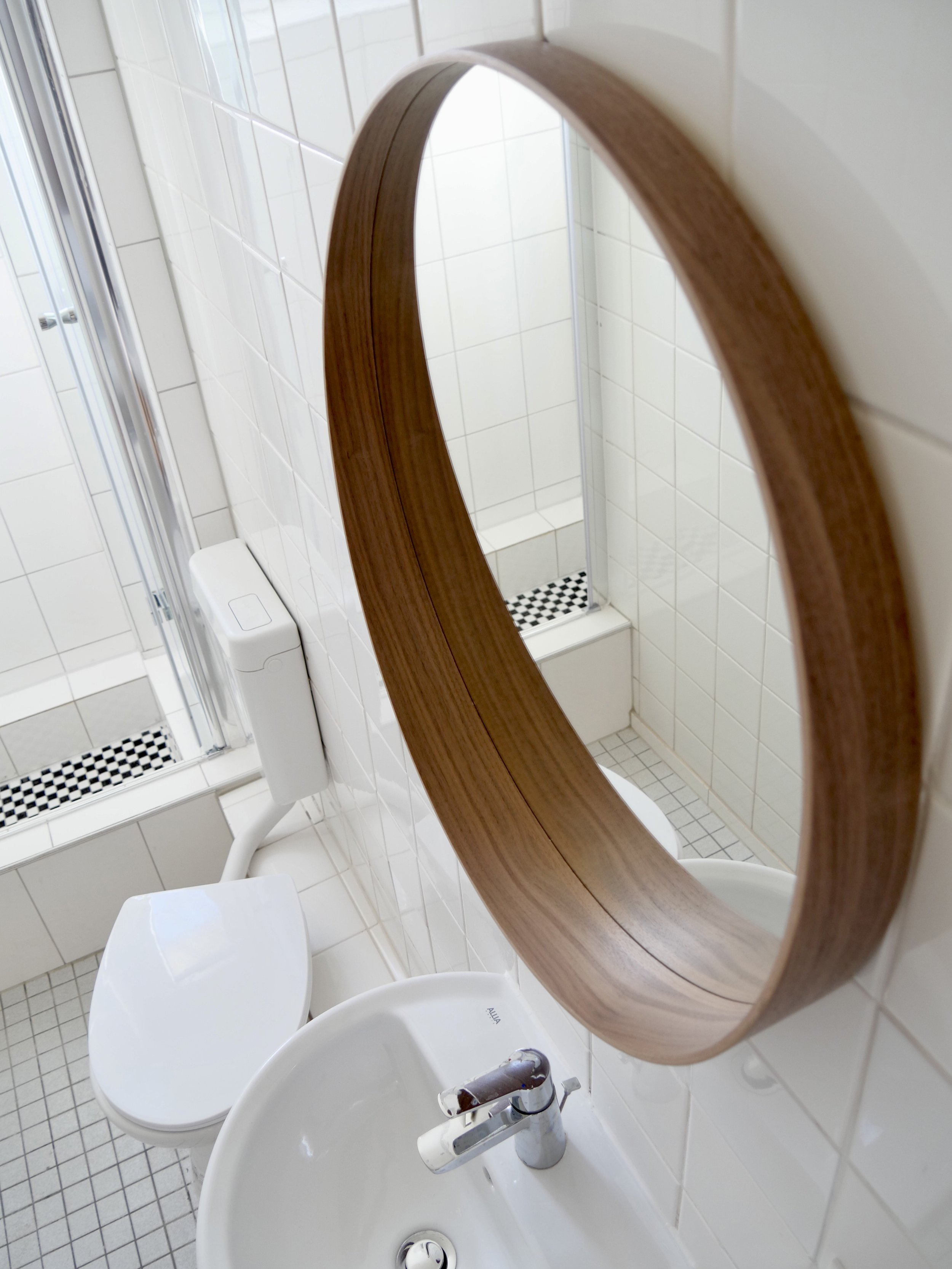
Natural Nest Reloaded.
Year: 2023
Construction Time: 4 months
Total Cost: ~ €20,000
Work Completed : Floor and wallpaper demolition, new wooden flooring, clay & silicate paint plaster, new electrical system, refurbishment of the old wooden windows, new kitchen
Sustainable Materials Used: Wood, Clay, Silicate
Biggest Challenge: We faced an unexpected issue with yellow stains bleeding through the fresh plaster due to residual wallpaper glue and nicotine deposits embedded in the walls, requiring multiple coats to cover.
Key Learning: Proper wall preparation, including thorough cleaning, adhesive removal, and priming, is essential to achieving a flawless finish while saving time and materials.
Project Overview
Project Summary
For this project, we refurbished a three-room apartment in Berlin-Lichterfelde, with a clear focus on natural materials. Our main goal was to explore sustainable options already available on the market and to evaluate their environmental impact. To support this process, we created our own sustainability framework, which allowed us to systematically assess and compare different materials.
We also wanted to find out how much of the renovation we could manage ourselves. This led us to explore DIY-friendly methods and materials, which we can now confidently recommend to other homeowners or renters who are hands-on and want to renovate their own spaces.
Before
When we first entered the apartment, we felt two things at once: shock and a sense of hope. What shocked us? The apartment was in terrible condition: the floor was broken, the wallpaper was peeling, there were moths, and the kitchen was covered in old food and oil. The surfaces were sticky and extremely unpleasant. But it didn’t stop there—there was a heavy, musty smell, like wet, old cloth, especially in the bathroom, where we also found mold in the shower. Small measuring devices at the windows confirmed what we suspected: the indoor air was far too humid.
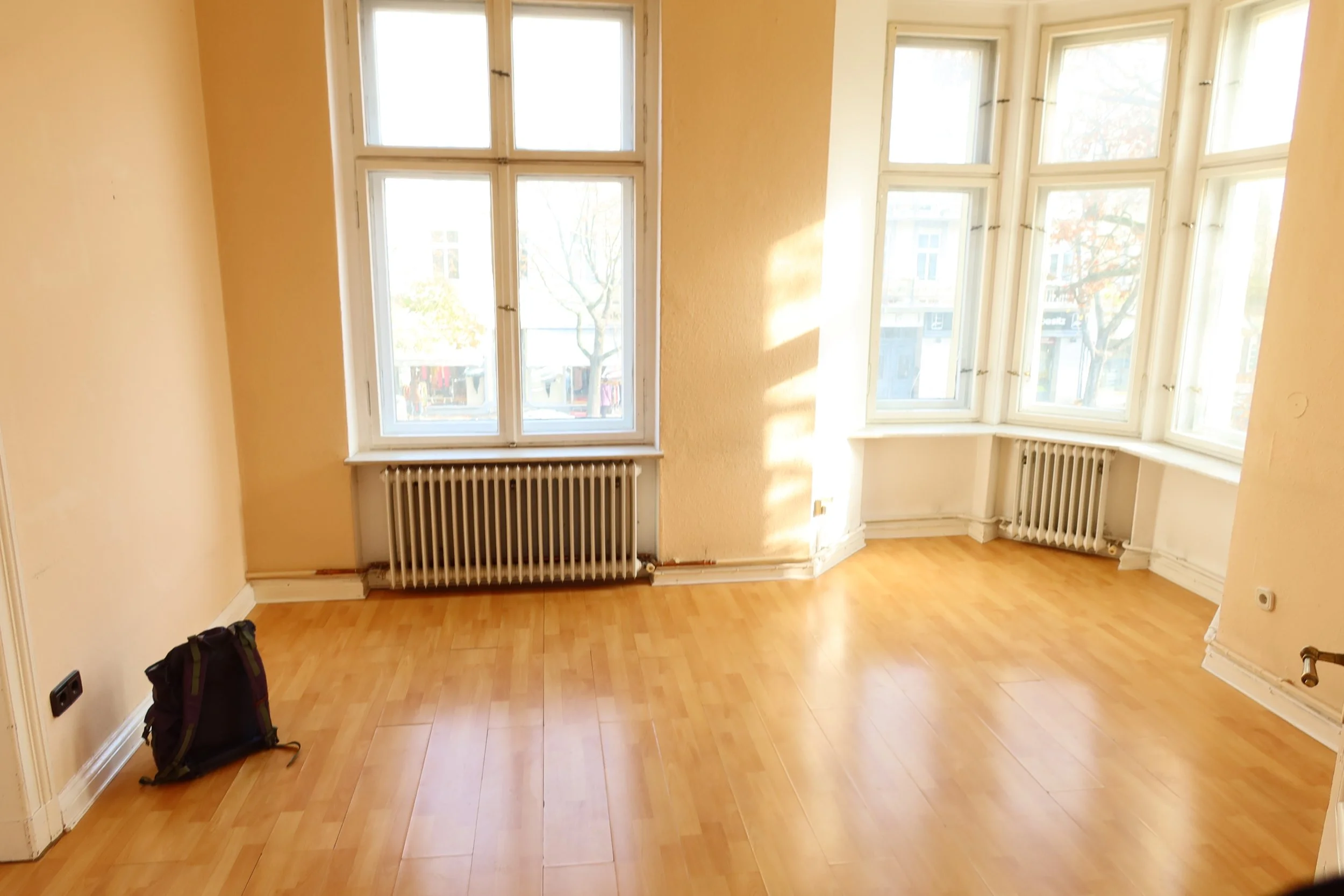
Healthy & Sustainable renovation in Berlin

Healthy & Sustainable renovation in Berlin

Healthy & Sustainable renovation in Berlin
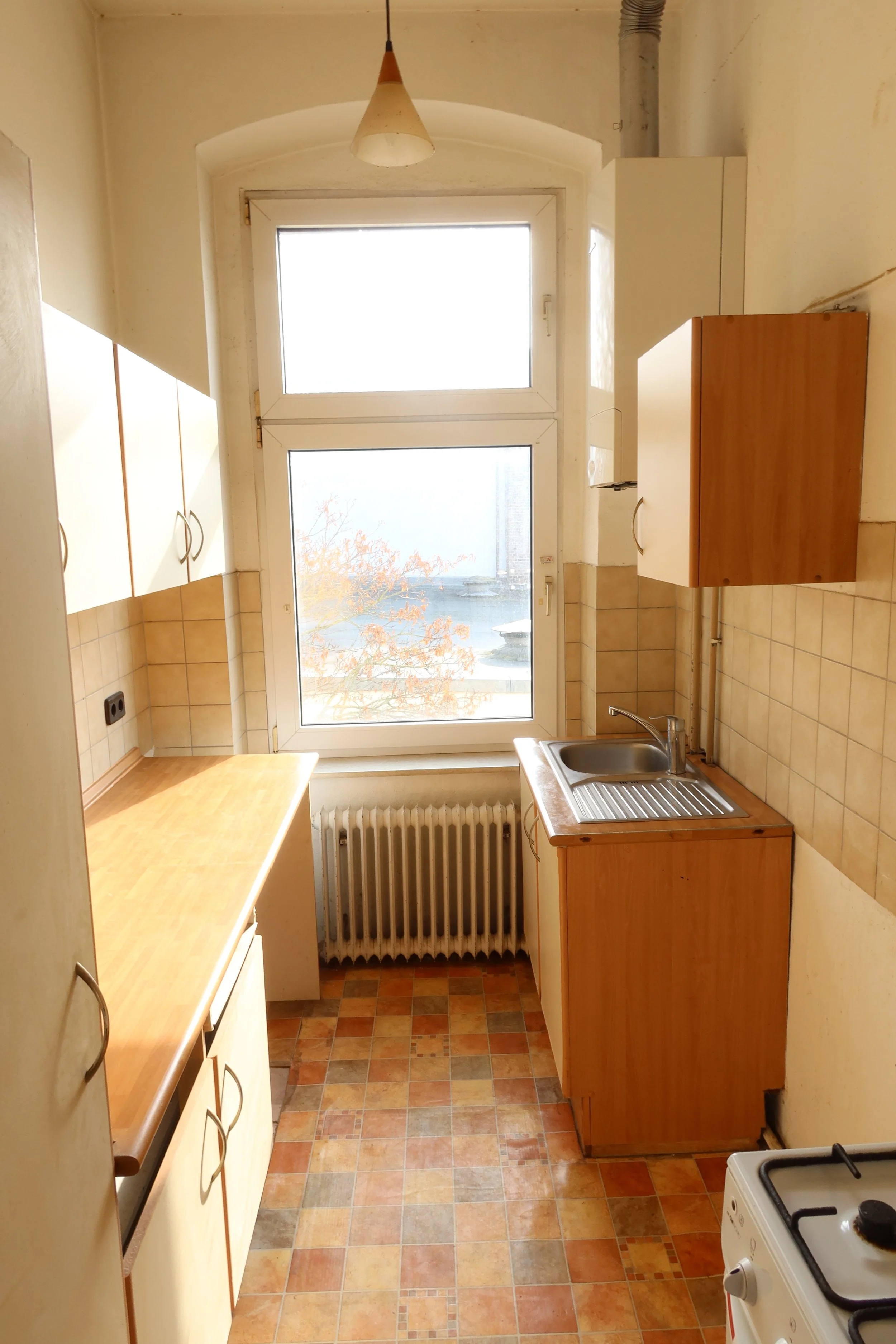
Healthy & Sustainable renovation in Berlin
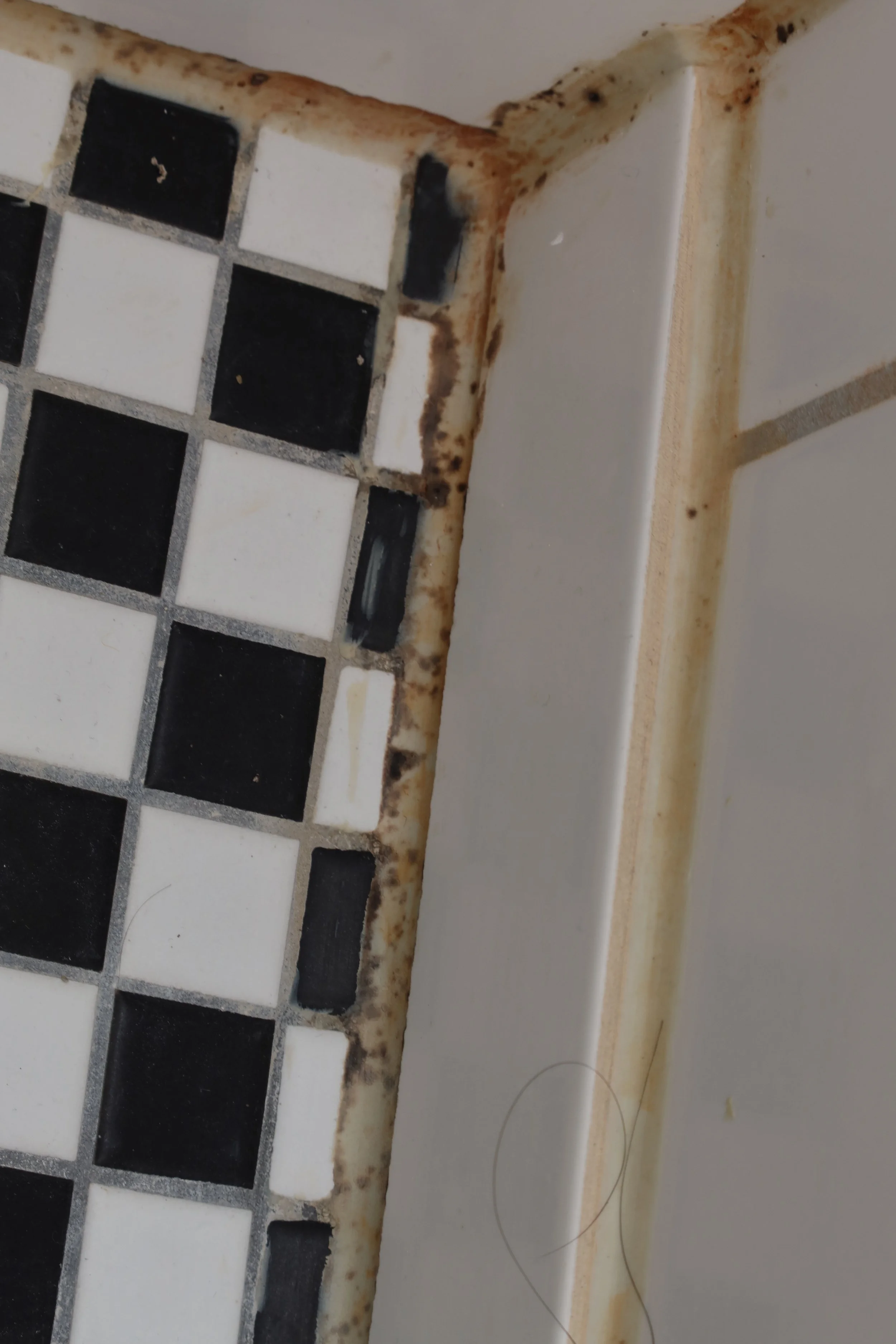
Healthy & Sustainable renovation in Berlin
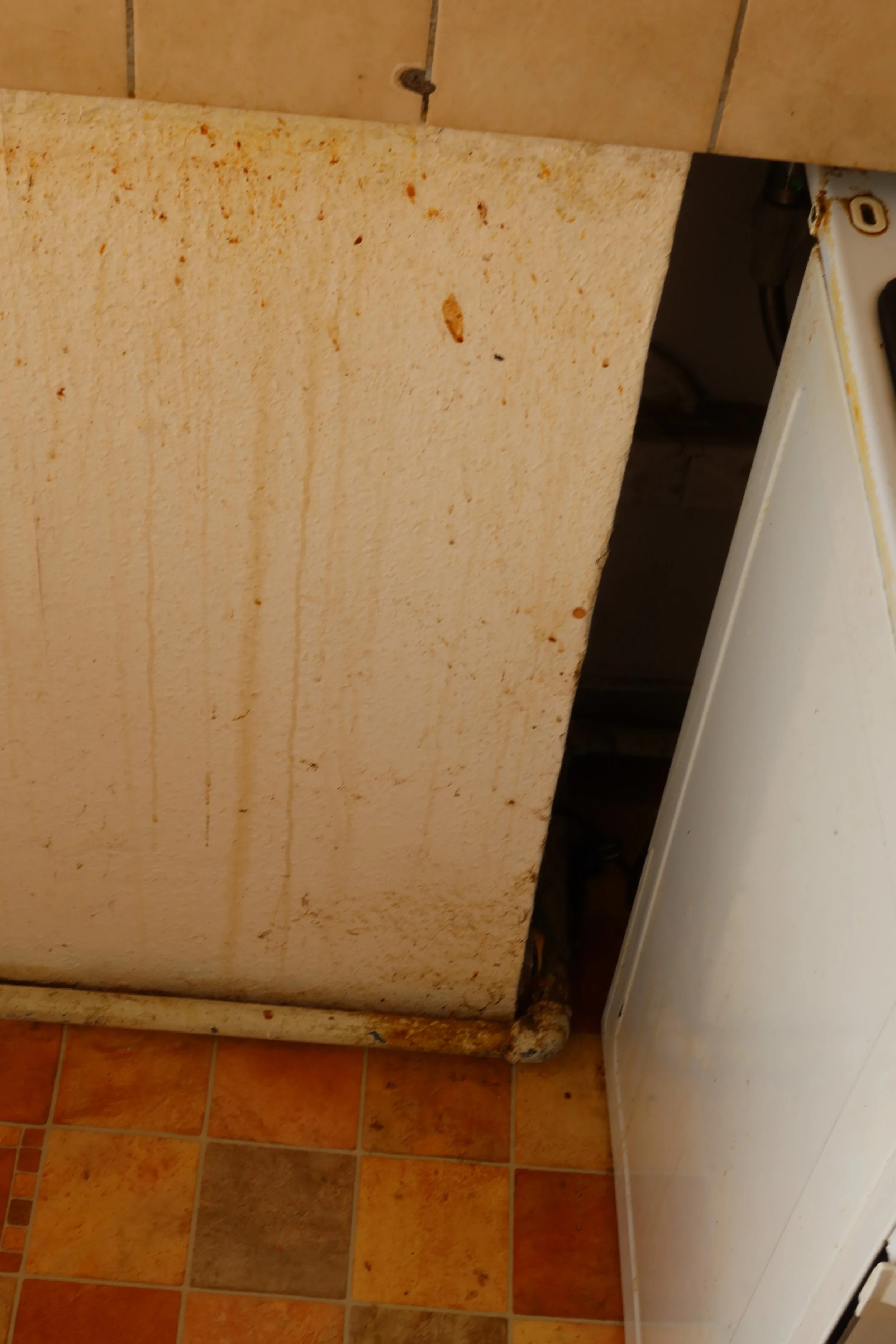
Healthy & Sustainable renovation in Berlin
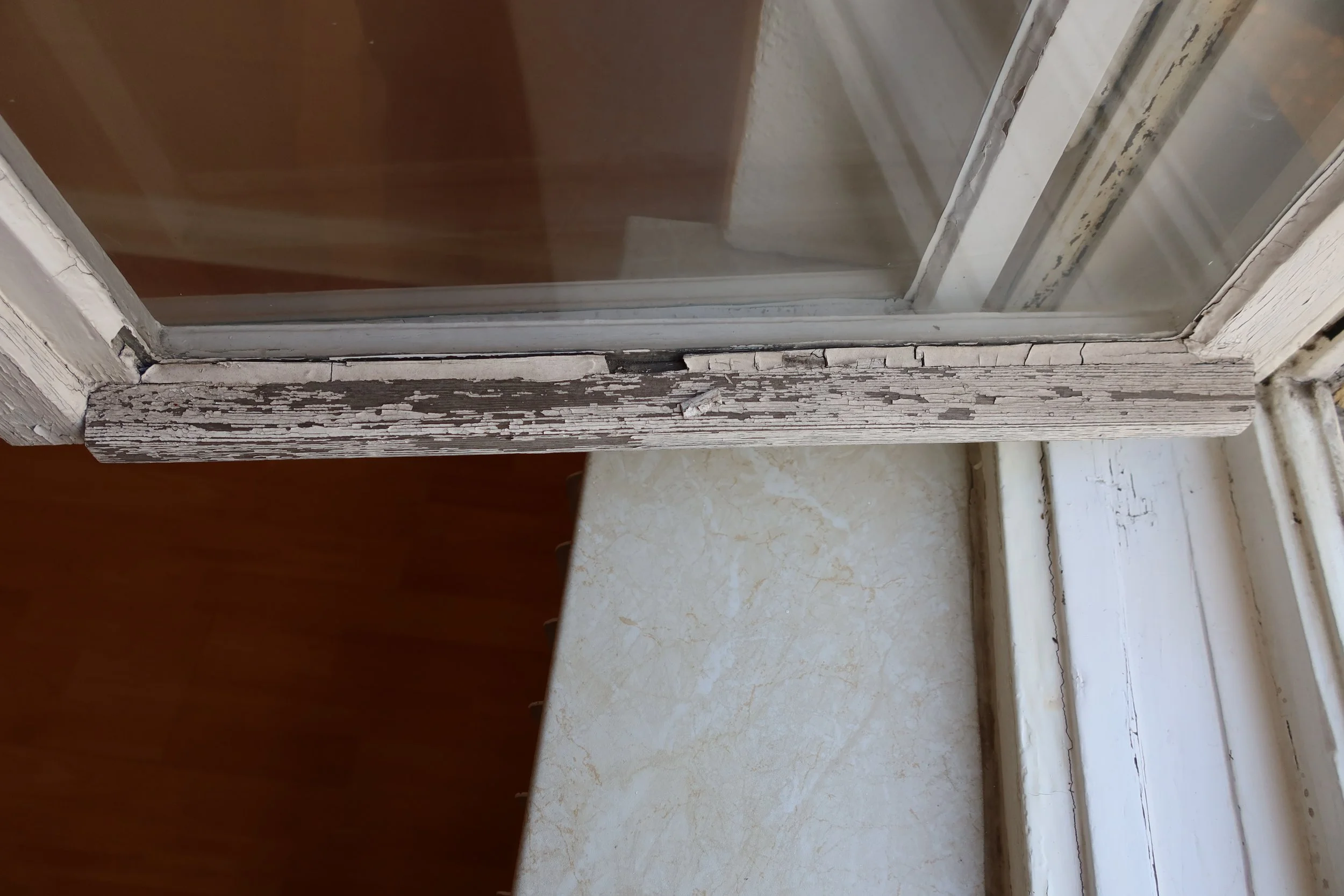
Healthy & Sustainable renovation in Berlin

Healthy & Sustainable renovation in Berlin
The Renovation Process
As part of our renovation, we removed the old, broken laminate flooring and laid a new one. Beneath the laminate, we discovered a heavily glued-down carpet on top of a chipboard base. Luckily, the chipboard was still in good shape and could be reused. However, removing the carpet left scratches and glue marks, so we lightly sanded the surface to prepare it for the new wooden floor. After extensive research and testing, we decided on a natural oak flooring from Hinterseer, which we’ll be writing more about soon.
We also stripped off the old wallpaper and refinished all walls—including the bathroom—with a brush-on plaster made of clay and silicate. This material was easy to apply, provided all the benefits of clay (like regulating humidity), and allowed us to skip the usual two-layer process of base and fine plaster. We intentionally kept the walls slightly rough, which gave them a natural look and helped us save both time and money.
In the kitchen, we removed the old fittings and renewed the floor. In the bathroom, we kept changes minimal: a new toilet, a new sink, and a deep cleaning of the existing tiles were enough to freshen up the space. Throughout the renovation, we focused on using natural, sustainable materials that not only look good but also create a healthier indoor environment.
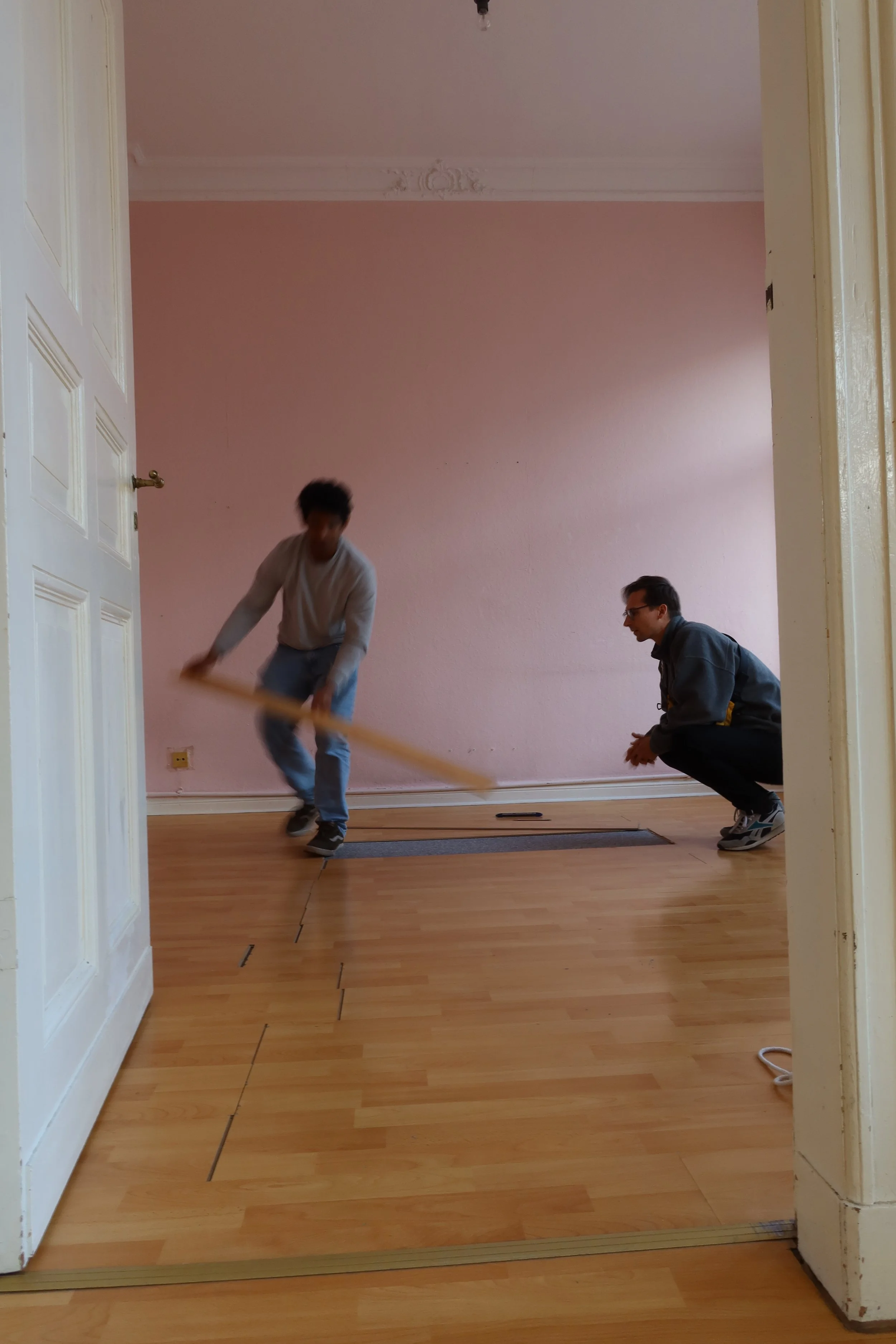
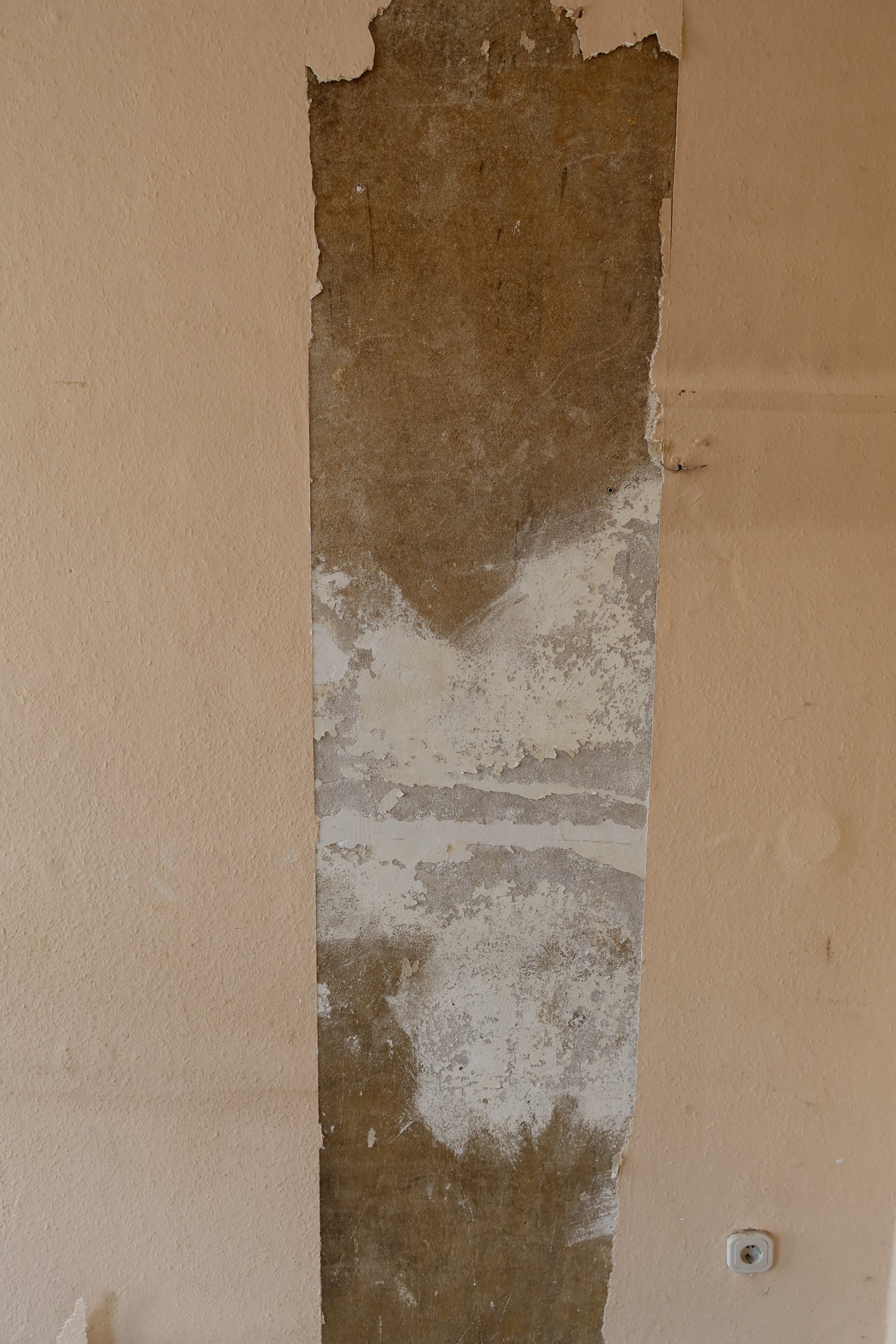
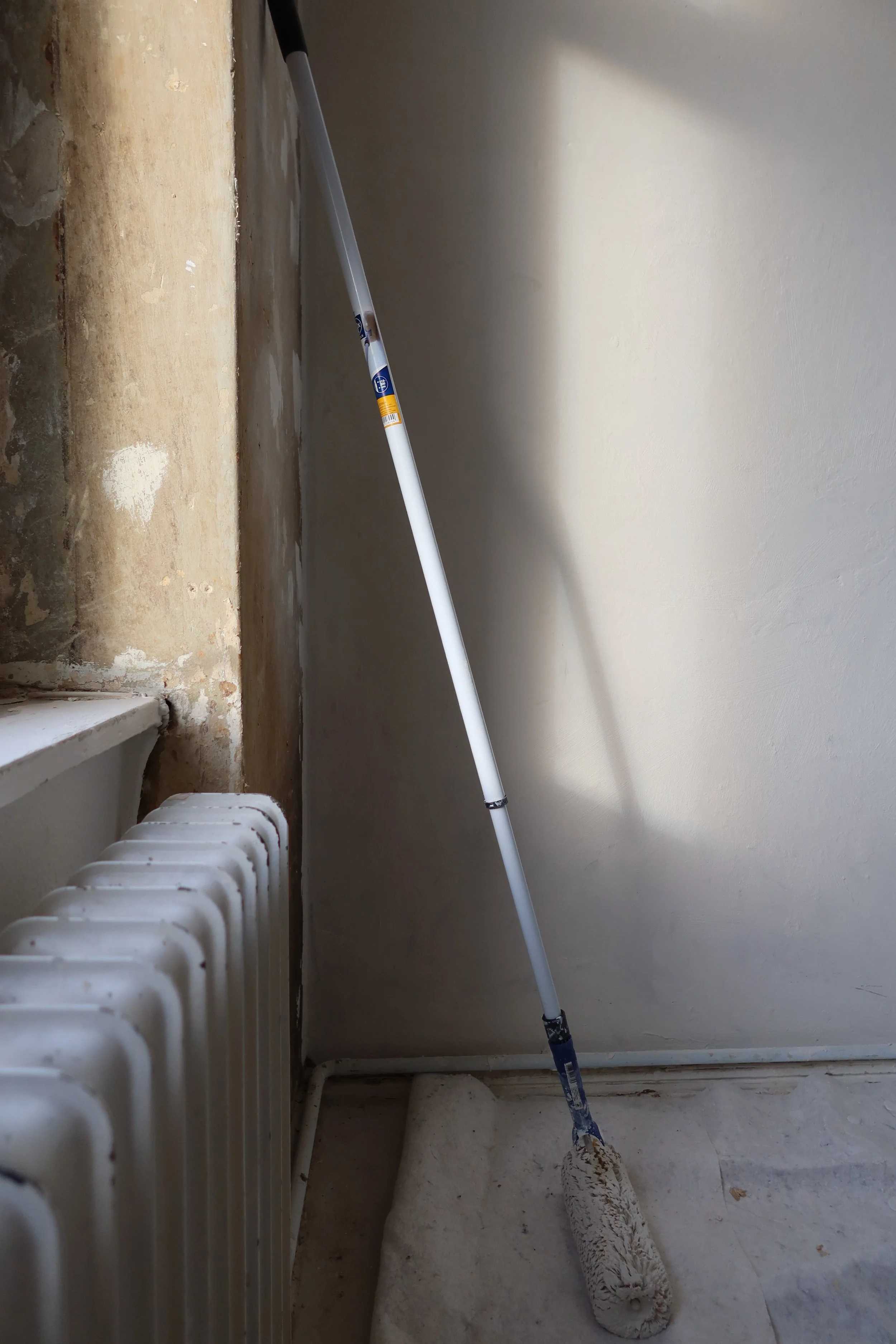
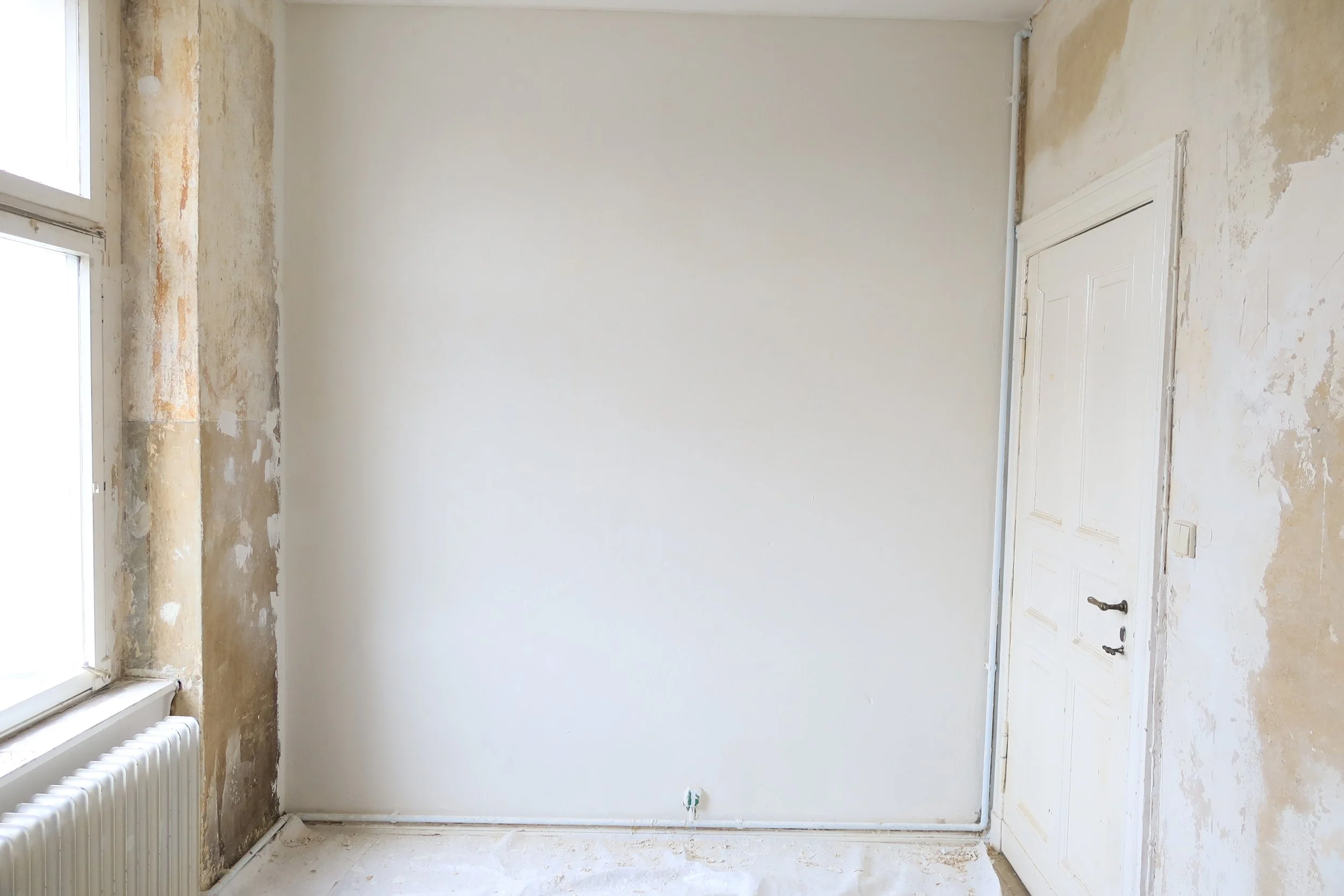
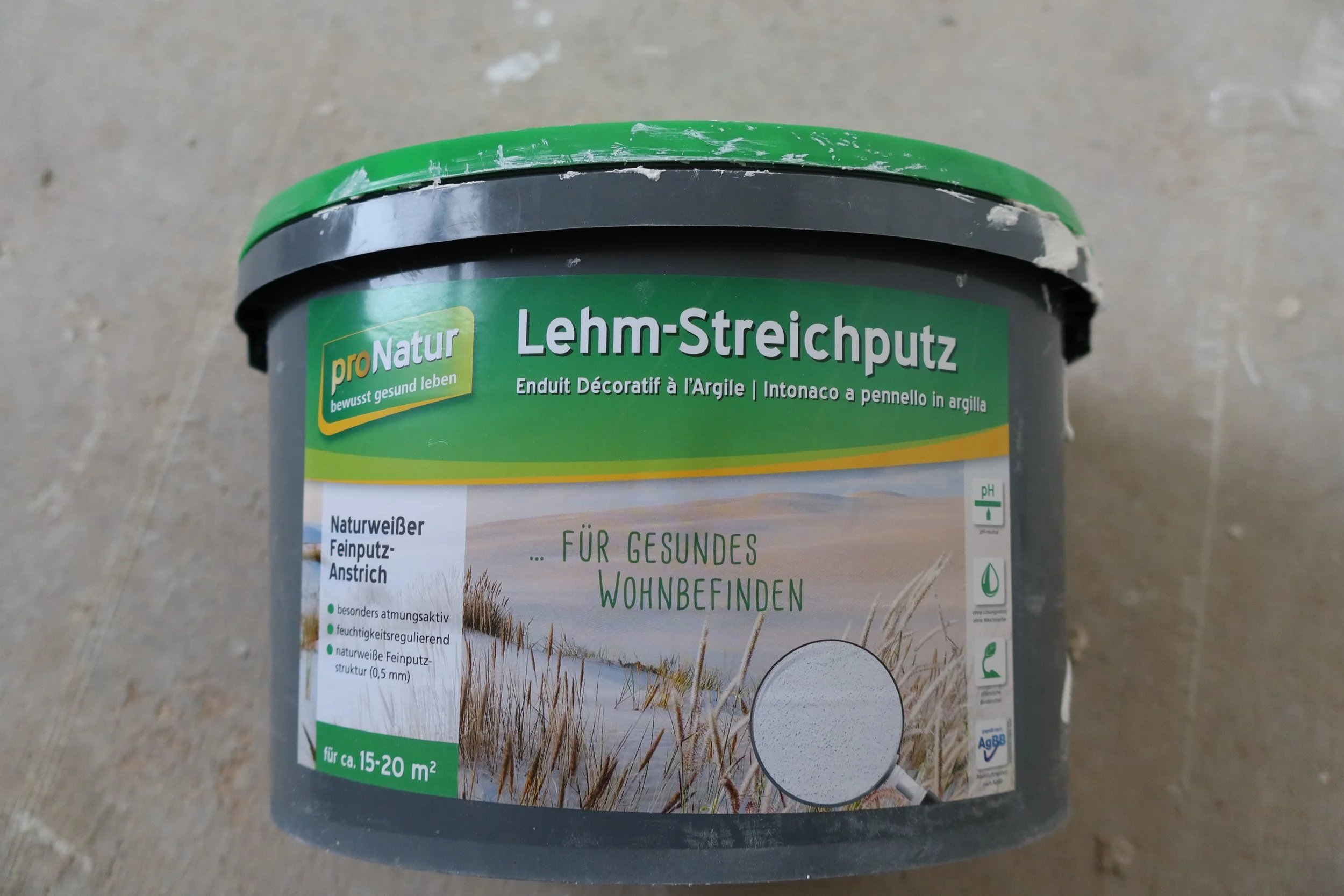

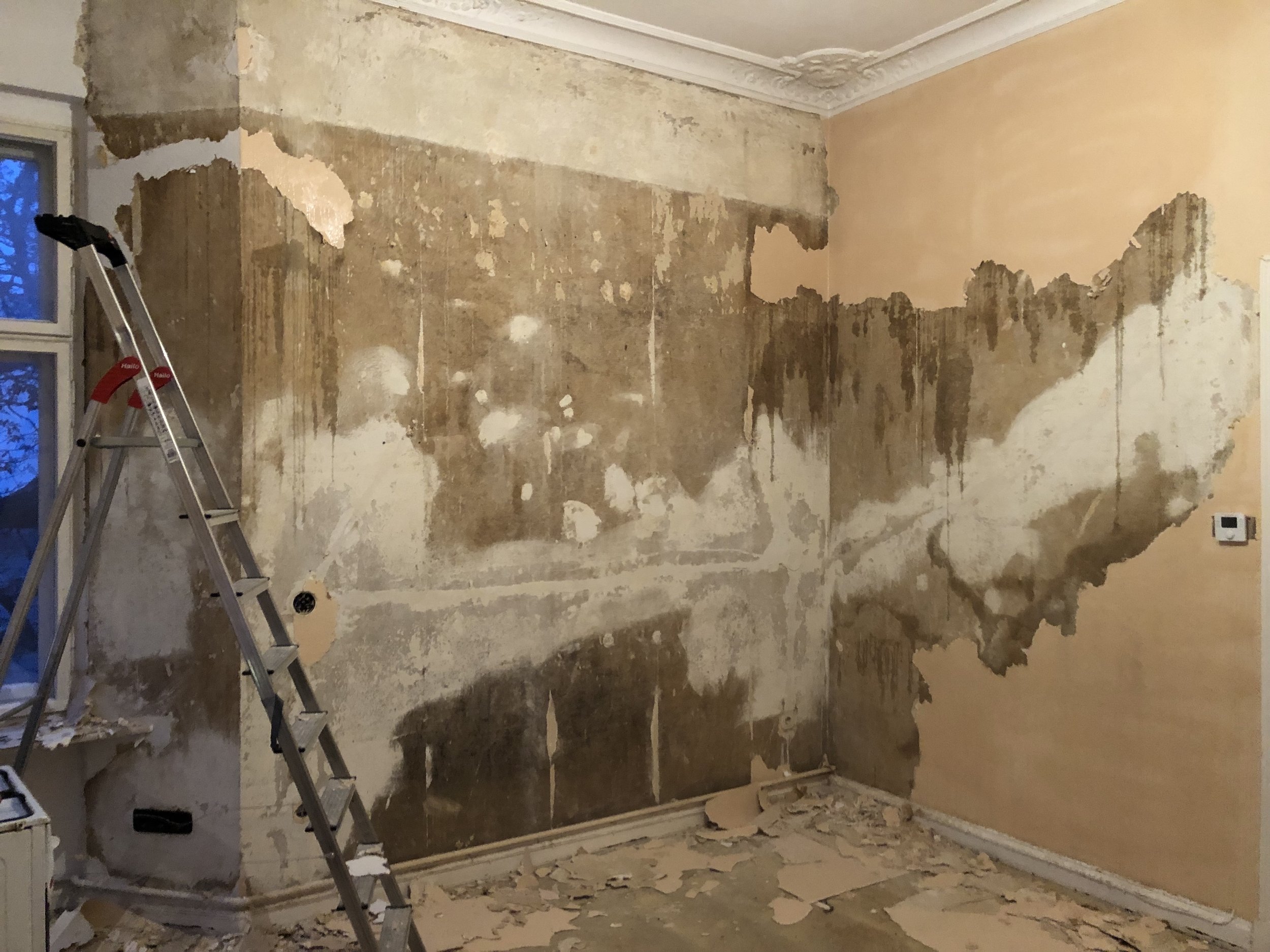
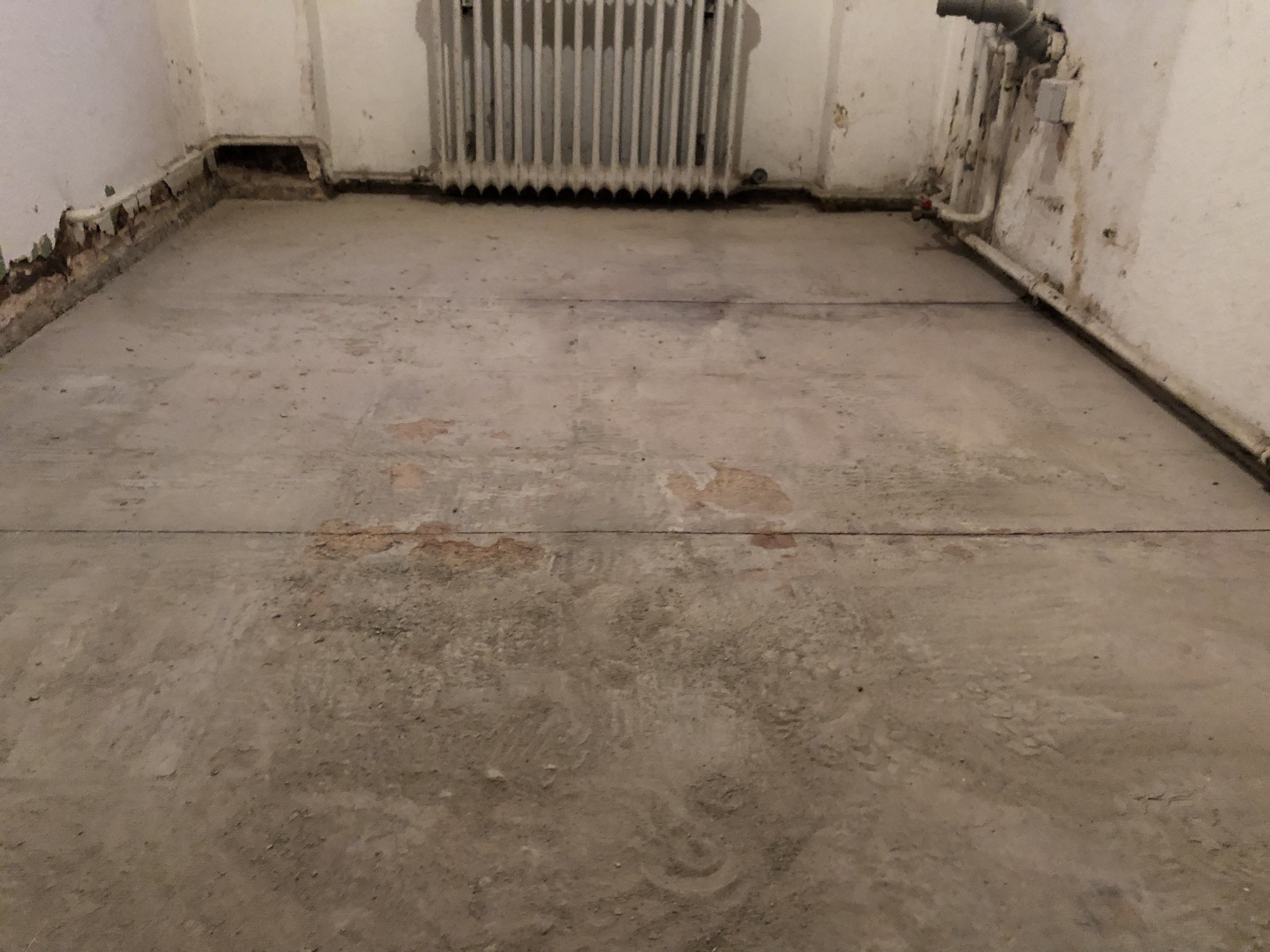

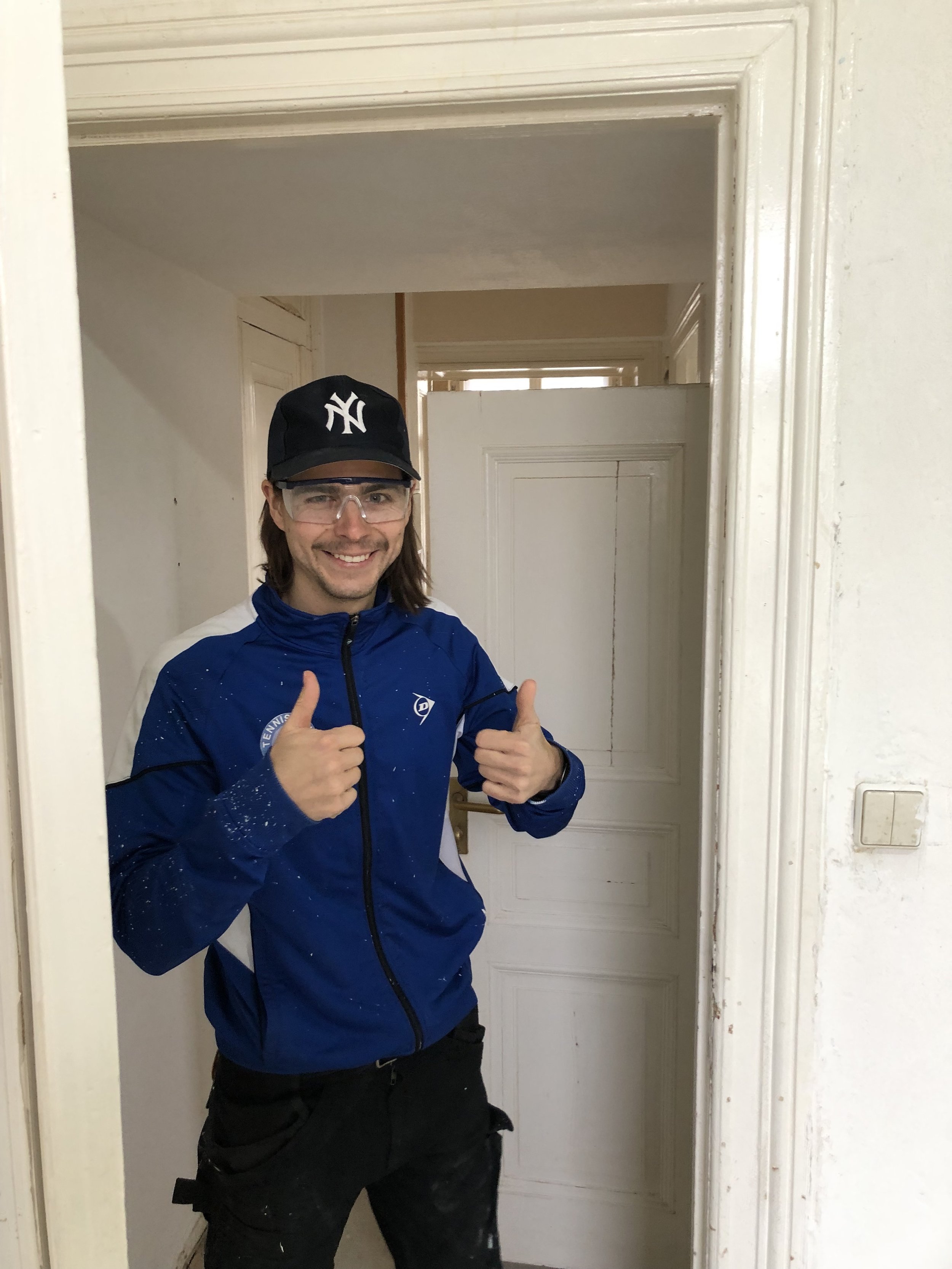

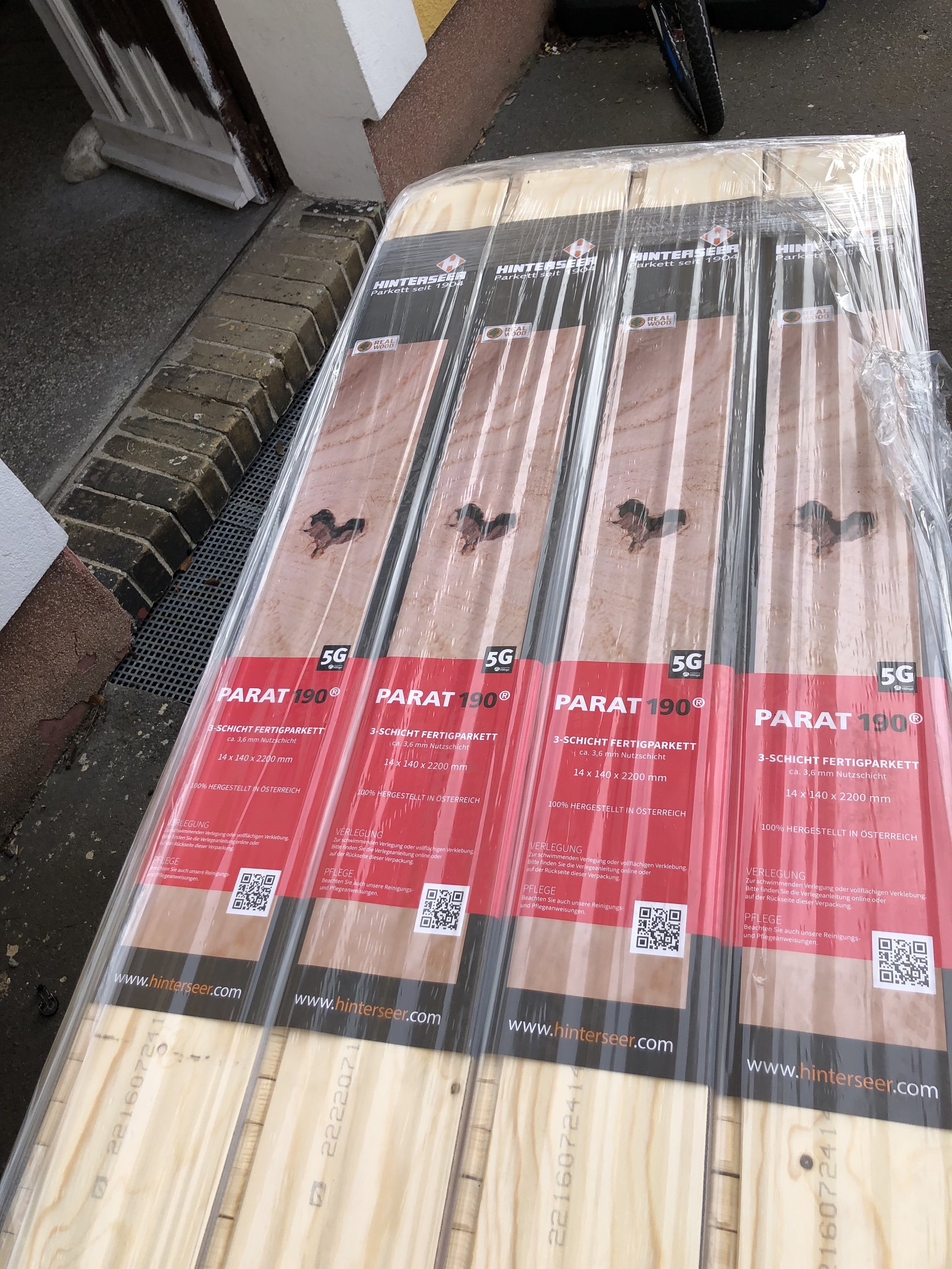
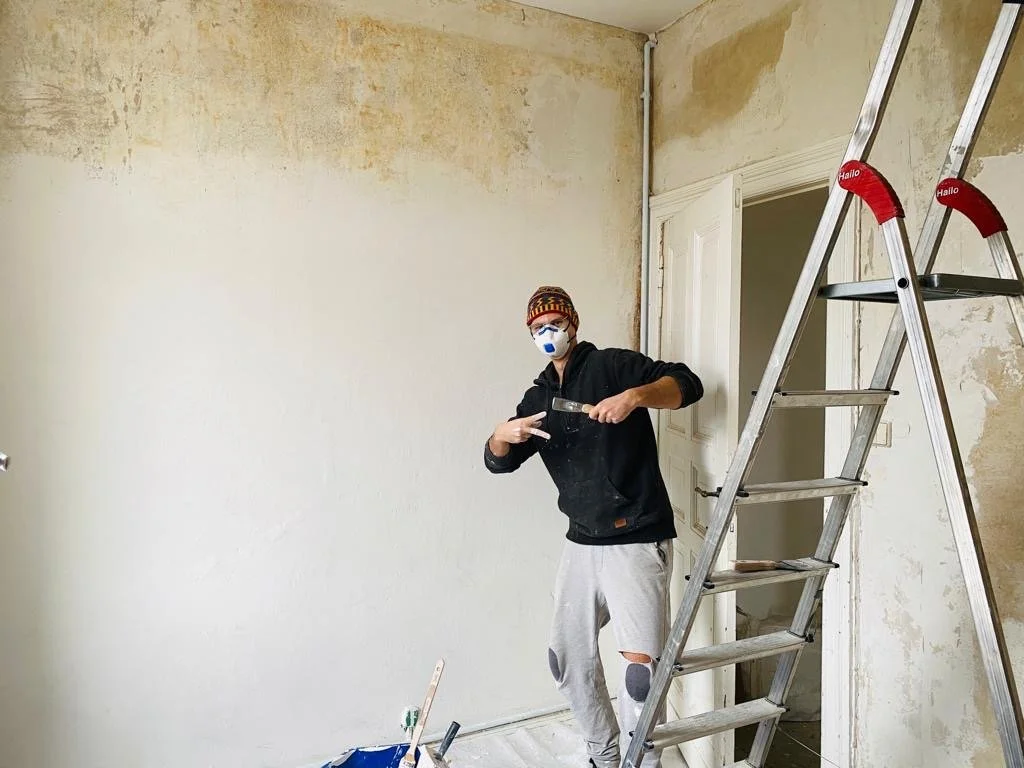
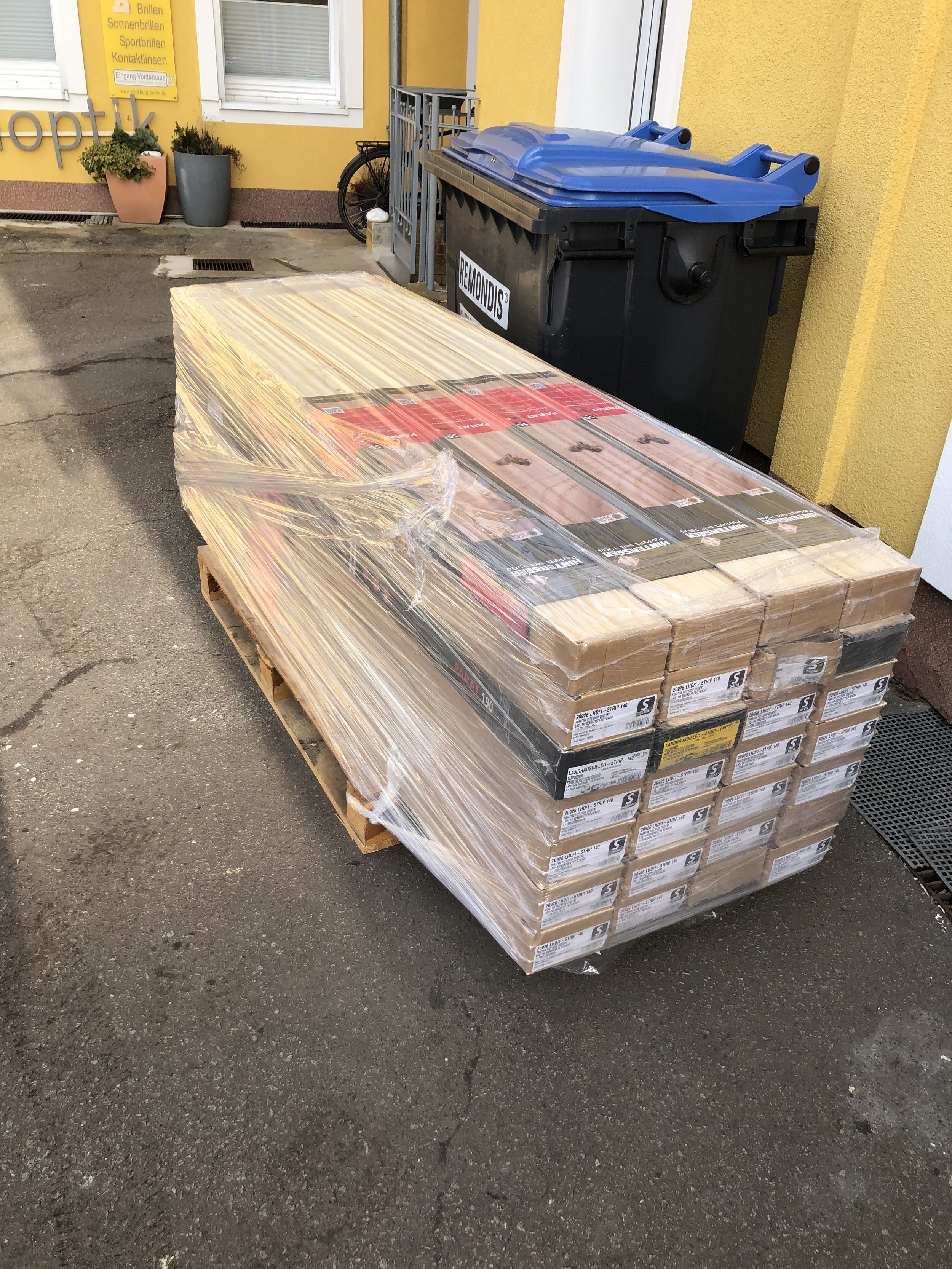
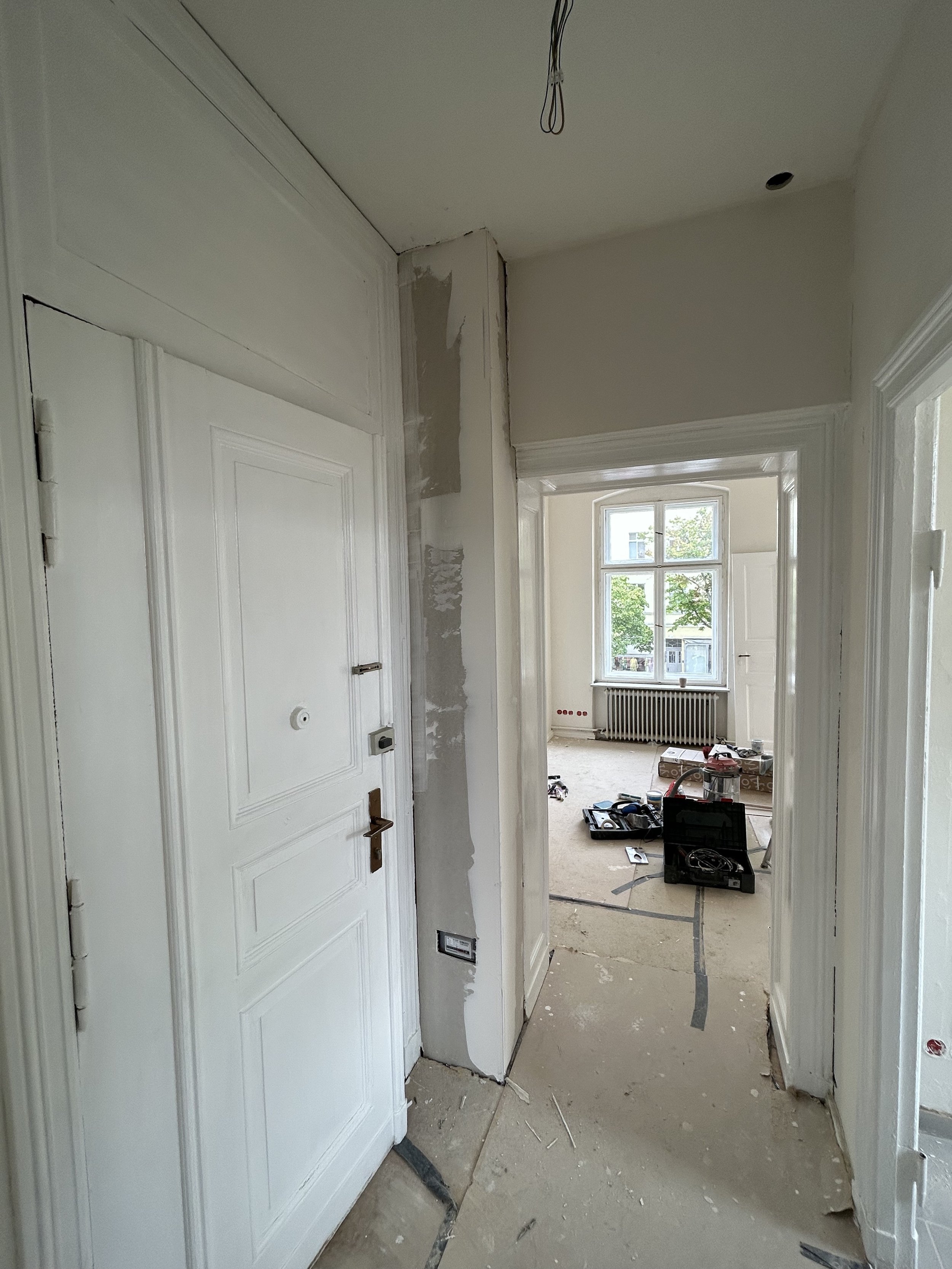
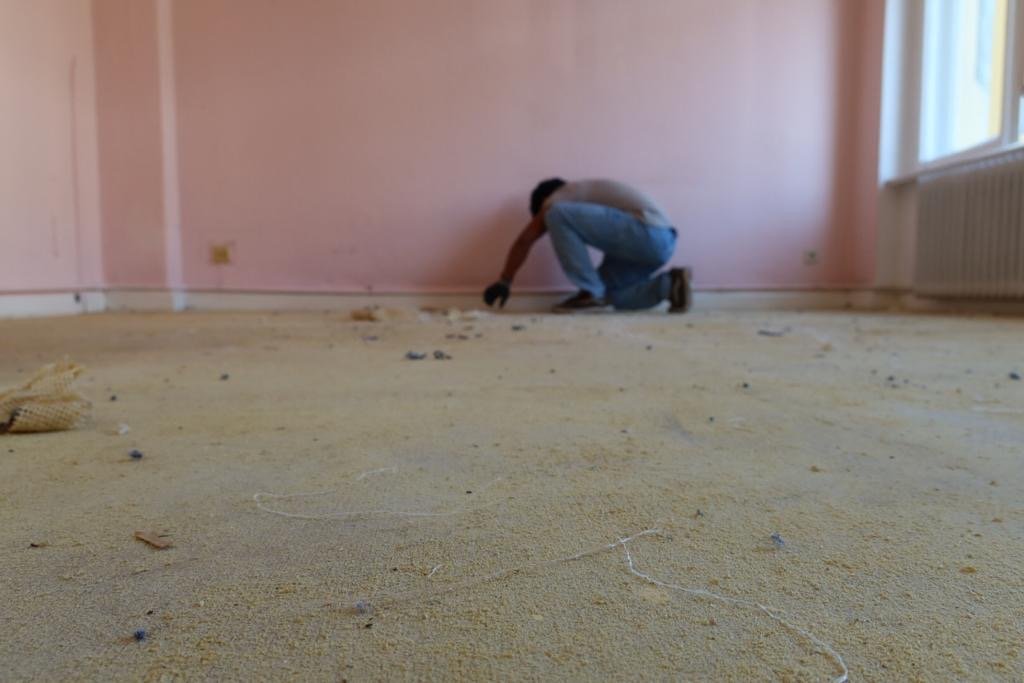

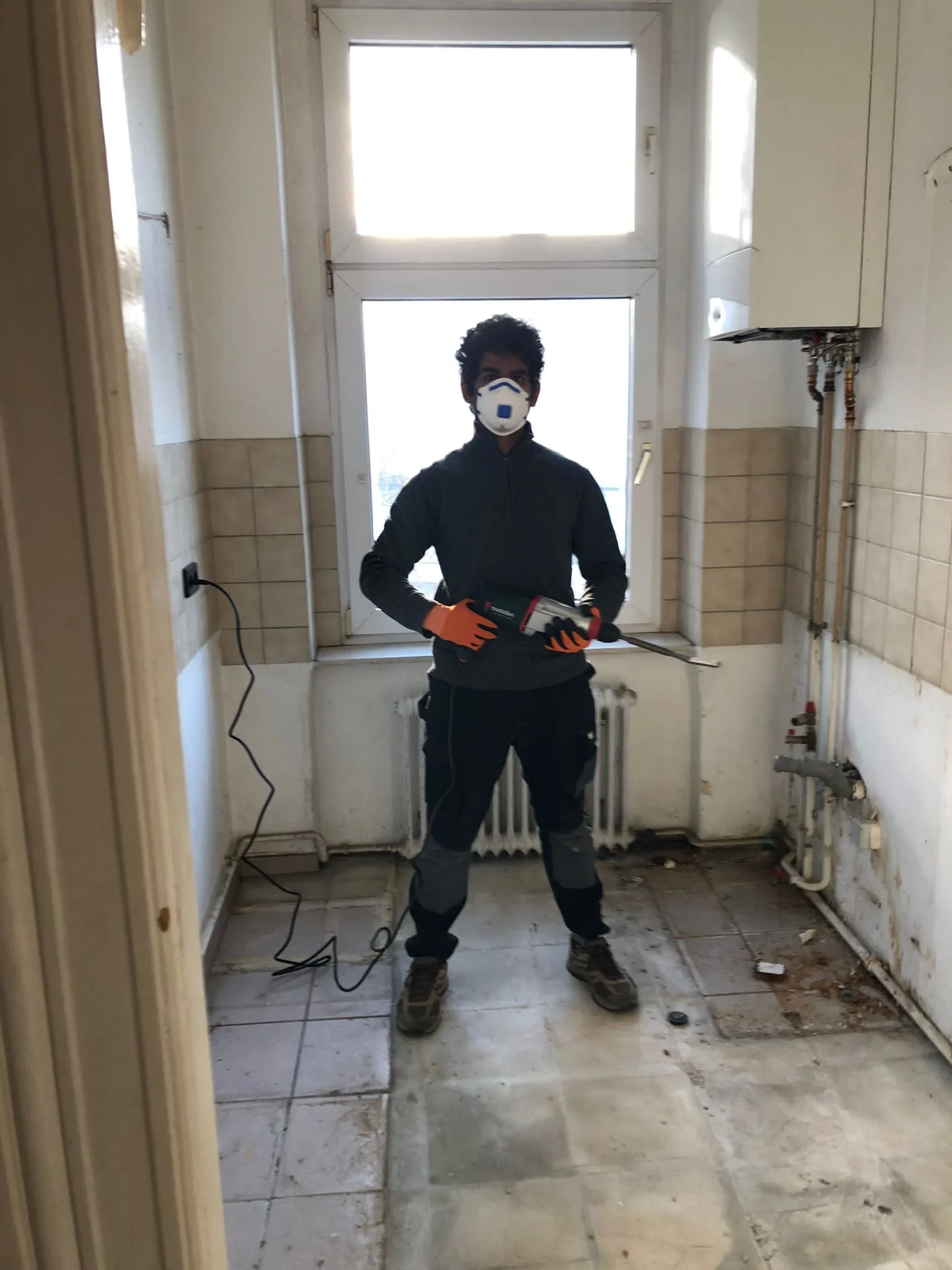
After
After the renovation, the transformation was striking. What once felt damp, outdated, and uninviting now radiates warmth, comfort, and a natural ambiance. A major factor in this change was the use of a clay-silicate brush-on plaster, which gave the walls a subtle texture and a natural, breathable finish that supports a healthier indoor climate.
Along the way, we learned some valuable lessons—especially about wall preparation. Initially, we underestimated the importance of cleaning and priming, which led to yellow stains bleeding through due to old wallpaper glue and nicotine residue. Our first wall needed up to four coats to cover it.
After improving our method—with thorough cleaning, adhesive remover, and the right primer—we only needed two coats for a flawless result. This experience showed us how proper prep work is just as essential as the materials themselves. It saves time, effort, and resources in the long run.



